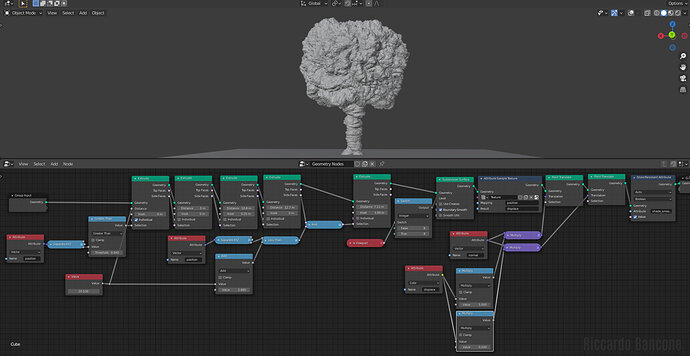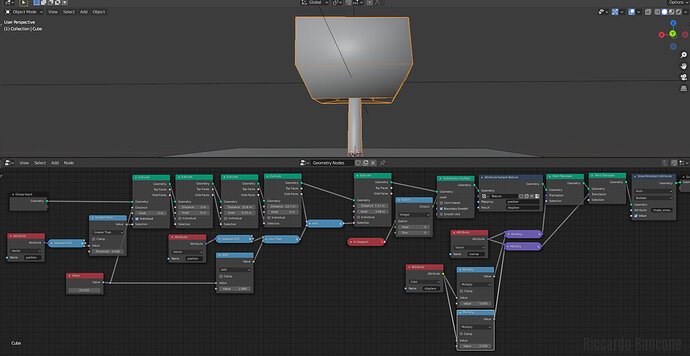Having fun with this prototype, Using fields to select faces to extrude and displace the points along normals. I find it pretty intuitive. Can’t wait to have all the options on the extrude node!
Thanks for all the hard work everybody! I’ll try the expandable sockets branch as well if I have time!
19 Likes


